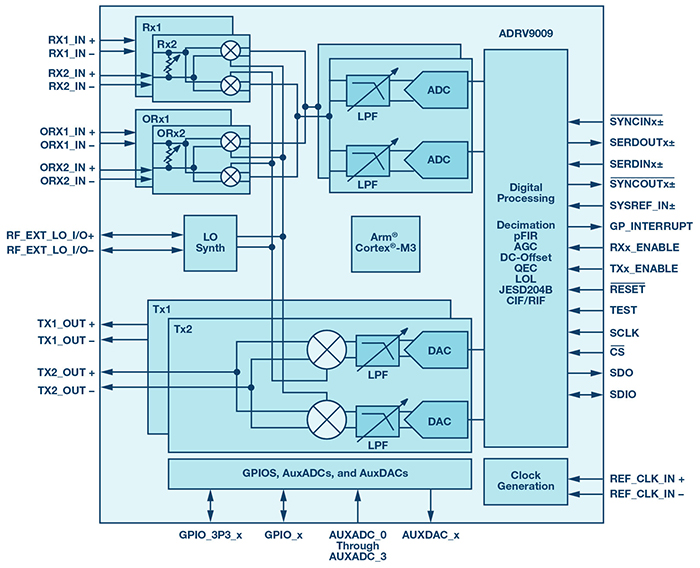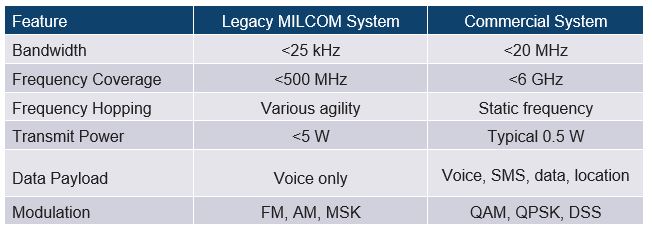Challenges for next-gen military communications
Military communications (MILCOM) have been the backbone for deployed soldiers since the Vietnam War. While these units have proven their capability and security for decades, the next generation of MILCOM platforms will need to leverage more modern communication technologies that have been developed to enable commercial platforms such as mobile phones and WiFi. Wyatt Taylor, Aerospace and Defense System Engineering Lead, Analog Devices explains.
MILCOM systems are often handheld units - walkie talkies - with a push to talk (PTT) button that the users can press when they need to relay a voice message. When the PTT button is not depressed, an incoming voice message can be received from another walkie talkie. The voice message relayed between two radios is modulated, encrypted, amplified, and transmitted wirelessly between the two soldiers. There are many differences between these MILCOM walkie talkies and a commercial cell phone or communication system, just a few of which are shown in Table 1 (below).
Next generation MILCOM platforms face the challenge of maintaining several of these critical differences, while closing some of the gaps between military and commercial communications systems. These MILCOM platforms will need to change from voice only systems by adding data and text capability. This will enable the delivery of data such as mapping, images, and video to a soldier in the battlefield. The challenge is that wider bandwidths create challenges for the radio platforms, primarily around size, weight, and power (SWaP). The traditional radio frequency (RF) signal chains used by MILCOM platforms will not scale to wider bandwidths and digital modulation schemes without consuming more power, and they will increase in size and weight. This growth in SWaP is unacceptable to the soldier, who needs a smaller, more capable radio that can be powered for long mission durations on minimal battery power. Thus, next-generation MILCOM platforms will require new RF signal chain architectures.
One revolution in small form factor radio design has been integrated RF transceivers. Integrated transceivers reduce size and power by repartitioning the radio in several ways. First, RF and analogue devices can be transferred to the digital domain - RF filters becoming digital filters, for instance. The digital implementations of these blocks are more efficient and more programmable than their RF counterparts.
Second, discrete RF signal chains are often heterodyne architectures, which require several layers of frequency conversion, filtering, amplification, and digital sampling. Integrated transceivers can use a zero-intermediate frequency (ZIF) architecture that drastically reduces the required components in the signal chain, specifically the required filtering and amplification stages. Removing these stages reduces both size and power.
Finally, the ZIF architecture is a more efficient use of the digital converters, which, in a wideband system, can drive overall power consumption. While commercial platforms have been able to take advantage of ZIF transceivers for the last decade, the first products with MILCOM applicable features have only come to market in the last few years. The latest transceiver that can be used in MILCOM systems is the ADRV9009, shown in Figure 1.

Above: ADRV9009 functional block diagram




